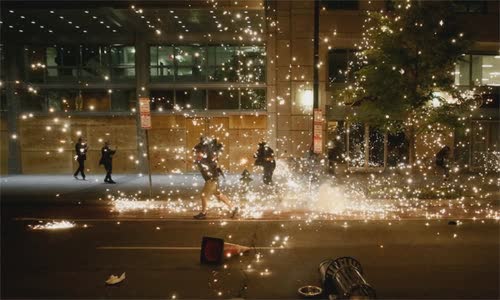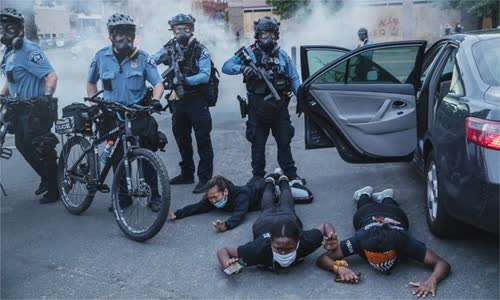"I can't breathe" protest related to the death of George Floyd reminded that riots are part of the history of protests in the US, according to experts.
Riot broke out in Minneapolis with dozens of towns and cities in the US causing alarming situation for both local residents and the whole country.

Protesters in Washington D. D. Photo: Reuters
According to Kathleen Burk, emeritus professor of contemporary history, University College London, UK, riots that are part of the history of widespread protests against violence, discrimination, war, housing, and poverty
Older Americans reminisce in the 1960s, a period of intense clashes between police and communities.
Not all clashes are related to race issues.
However, the thing that left the strongest memory behind was racial riots.
Hundreds of incidents, large and small, occurred in the 1960s. However, 1967 saw an outbreak of riots called the "1967 Hot Summer" with 159 riots that lasted for three months.
The assassin and African-American human rights activist Martin Luther King was assassinated on April 4, 1968, causing nearly 10 major, bloody, and violent riots across the country in the next 10 days.
Through television, riots spark other riots, confuse and spark clashes between extremists and police from one city to another.
Rodney King, a black construction worker, was beaten by four police officers in 15 minutes.
Rioting in the US so far has not been as fierce as it was in 1967, 1968 or 1992. However, the cause remains the same, especially due to the police's excessive use of force on blacks and such behavior is rare.

Police arrested protesters in Minneapolis, Minnesota, on May 31 Photo: NYT
Protests erupted in Minneapolis amid a slumping economy due to Covid-19.
The outbreak of anger originated from the painful and public death of George Floyd.
The rebellion now has an additional tool: social media.
The broad public protest against the Vietnam War was the reaction to the image on the news at 6pm.
Kathleen Burk said that in the 2020 presidential election year, events like Covid-19, protests and riots will affect the election results.
"After calling Floyd's family with a tweet informing the world about the phone call, Trump returned to his preferred position. He wanted to maintain a hard line, addressing the worries of the grassroots.
Meanwhile, Joe Biden, the Democratic presidential candidate, took an opposing position.
Trump wants to show the image of a strong leader, protecting the supporters and other Americans.
Biden also had to complete the task of bringing together minority groups, women living in the suburbs, and radical, liberal and conservative factions in the Democratic Party, which was not as easy as the task of gathering the states.



 Ruel Parala
Ruel Parala







